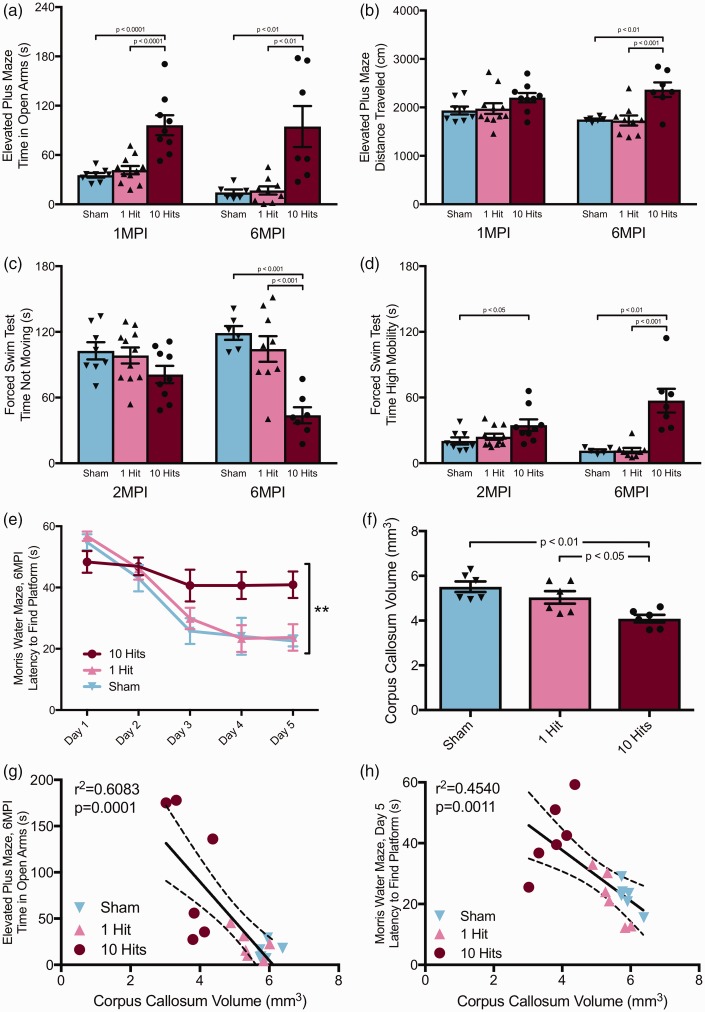Figure 7.
Sustained deficits in behavioral function and white matter atrophy persist up to 6 months postinjury. (a) Mice with rmCHI spent more time in open arms of the elevated plus maze at both 1 (one-way ANOVA), F(2, 25) = 18.31, p < .0001, and 6 MPI (one-way ANOVA), F(2, 19) = 9.960, p = .0011. (b) Mice with rmCHI were more active in the elevated plus maze at 6 MPI, but not at 1 MPI (6 MPI; one-way ANOVA), F(2, 19) = 10.26, p = .0010. (c) At 6 MPI, but not at 2 MPI, rmCHI mice spent less time not moving in the forced swim test compared with both 0- and 1-hit groups (one-way ANOVA), F(2, 19) = 15.62, p < .0001. (d) At both 2 MPI and 6 MPI, mice with rmCHI spent more time classified as “high mobility”: 2 MPI, one-way ANOVA, F(2, 25) = 3.542, p < .0442; 6 MPI, one-way ANOVA, F(2, 17) = 15.21, p = .0002. (e) Mice with 10 hits were unable to learn the location of the hidden platform in the Morris water maze at 6 MPI (two-way ANOVA), F(8, 76) = 2.858, p < .0078. (f) Mice with 10 hits had significant white matter atrophy compared with both sham and 1-hit mice (one-way ANOVA), F(2, 15) = 2.532, p < .01, and (g) corpus callosum volume measured at 6 MPI negatively correlated with latency to time in open arms during the elevated plus maze at 2 MPI (r= −.78, p = .0001). (h) Corpus callosum volume also negatively correlated with MWM Day 5 latency to find the platform at 6 MPI (r= −.674, p = .0011).
rmCHI = repeated mild closed head injury; MPI = months postinjury; ANOVA = analysis of variance; MWM = Morris water maze.

